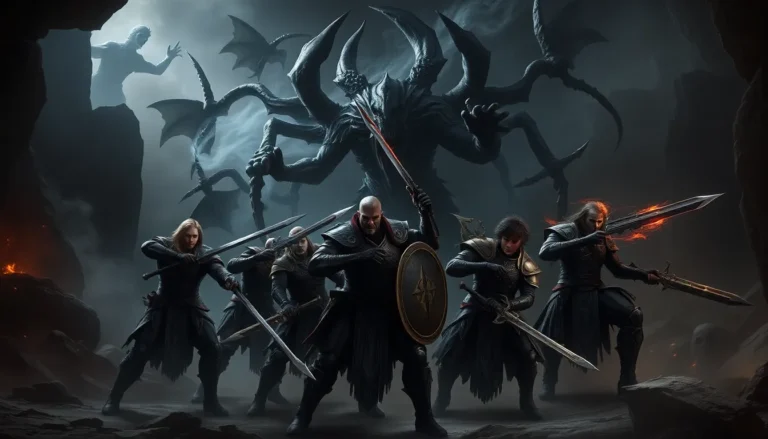Imagine you’re ready to level up your character in Old School RuneScape, cup of coffee in one hand, mouse in the other, and then, bam. You’re hit with the dreaded downtime. Players know this moment all too well: a few chuckles may escape as they refresh their game client repeatedly, hope springing eternal. Everyone has been there, staring at a loading screen while dreaming of glory in Gielinor. While downtime may seem like a pesky adversary, understanding its implications can help players navigate this challenge with ease. It’s time to jump into the nitty-gritty of OSRS downtime: what it is, why it happens, and how to cope like a champion.
Table of Contents
ToggleWhat Is OSRS Downtime?

OSRS downtime refers to the periods when the game servers are unavailable, preventing players from logging in or participating in gameplay. This phenomenon can occur for a variety of reasons, affecting everyone from casual players to hardcore gamers. Depending on the duration of the downtime, it can range from minor inconveniences to major disruptions, sparking frustration among the player base.
Whether planned or unplanned, downtime is an inevitable part of the gaming landscape. The game relies on server stability, and any maintenance work or technical glitches can interrupt the seamless experience players crave. Knowing about OSRS downtime helps gamers manage their time better and adjust expectations for when they can log back into the fray.
Common Causes of Downtime
Several factors contribute to OSRS downtime. One of the primary causes is server maintenance. Regular upkeep is essential for optimizing performance and ensuring a smooth gaming experience. During scheduled maintenance, the developers apply necessary updates, fix bugs, and make improvements to the game framework.
Unfortunately, unscheduled downtime can happen too. Server crashes due to overwhelming traffic spikes, DDoS attacks, or unforeseen bugs can abruptly take the servers offline. Each of these reasons presents unique challenges, forcing the development team to react quickly.
Also, external factors can contribute as well. For instance, updates in third-party applications or security enhancements can inadvertently affect server performance, leading to an unexpected downtime window.
How Downtime Affects Players
The impact of downtime on players can be significant. For hardcore gamers who invest hours in gameplay, losing access can feel like a slap on the wrist. Players often plan their sessions around events, such as boss fights or community activities. Suddenly being unable to log in disrupts these plans and can even lead to missed opportunities for valuable in-game rewards.
Casual gamers feel the pinch too. Maybe they had some downtime scheduled, excited to level up their character or complete a few quests. Instead, they find themselves staring at error messages.
Also, there is a social aspect. Players often connect with friends while gaming, and downtime can interrupt not just individual play but also group dynamics. Tensions can rise as friends scramble to find alternate activities, sometimes leading to humorous yet awkward substitutes, like discussing the weather instead of strategizing for a raid.
Scheduled Maintenance vs. Unscheduled Downtime
Scheduled maintenance is typically announced in advance. This transparency allows players to plan their gaming sessions accordingly. Knowing when the game will go offline provides a sense of control: players can aim to finish tasks before the deadline.
On the other hand, unscheduled downtime throws a wrench into players’ plans. This unpredictability can lead to frustration and disappointment. The difference lies mainly in the communication from the developers, while one feels planned and organized, the other often feels chaotic.
Communicating effectively about these downtimes can make all the difference. Players appreciate updates about the status of the servers, which helps them understand how long they might have to wait before diving back into the game.
Responses and Community Reactions
Whenever downtime occurs, the response from the community can be mixed. Some players take to social media or forums to vent their frustrations. Others, but, take a more humorous approach, making memes or sharing funny anecdotes about the downtime experience. This lighthearted reaction can foster camaraderie among players, creating a sense of shared experience, even in adversity.
Also, the way developers respond to downtime plays a crucial role. Prompt updates, transparency, and even compensation, such as in-game rewards for the inconvenience, can pacify upset players. Trust builds between the game’s developers and its community, leading to a more robust player base over time.
Mitigating Downtime: Tips for Players
While downtime can be frustrating, there are ways for players to make the best of the situation. First, it’s prudent to stay updated on the game’s official channels. Following OSRS on social media or checking community forums allows players to receive notifications about downtime in real-time.
Secondly, players can use this time to engage in related activities. Reading guides, watching streams, or even checking out fan art can fill the void. It’s also a golden opportunity to socialize, maybe even reaching out to fellow players to discuss strategies or share tips. Engaging with the community can turn frustration into a productive exchange.
Finally, preparing for scheduled downtimes ensures that players maximize their gaming hours effectively. Prioritizing tasks like grinding and questing before known downtimes can help maintain progress, making the hiccup feel less impactful overall.





